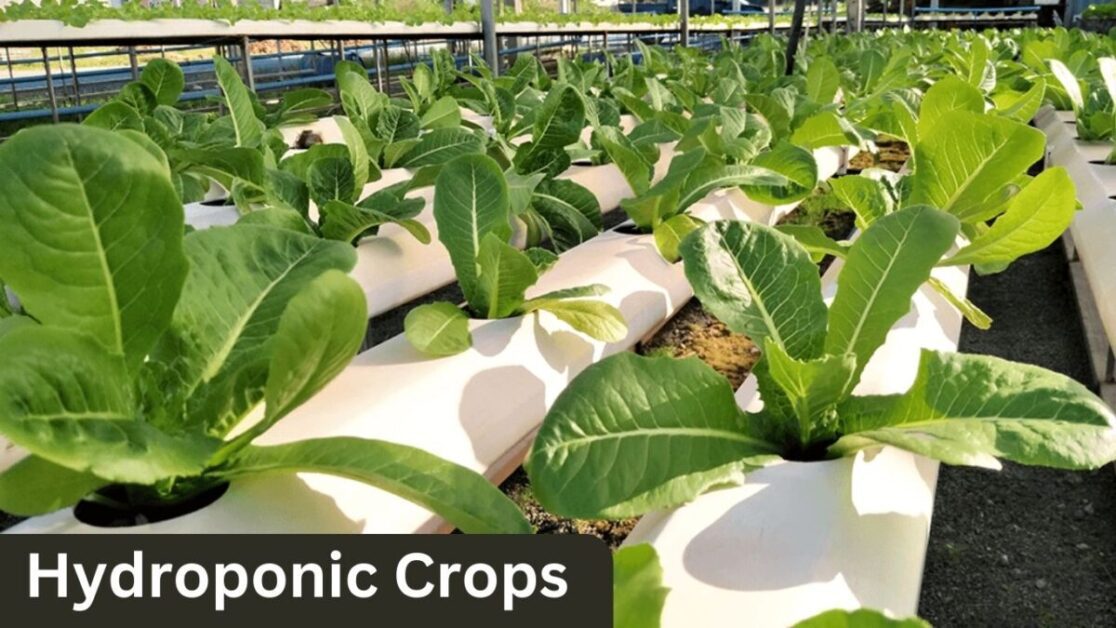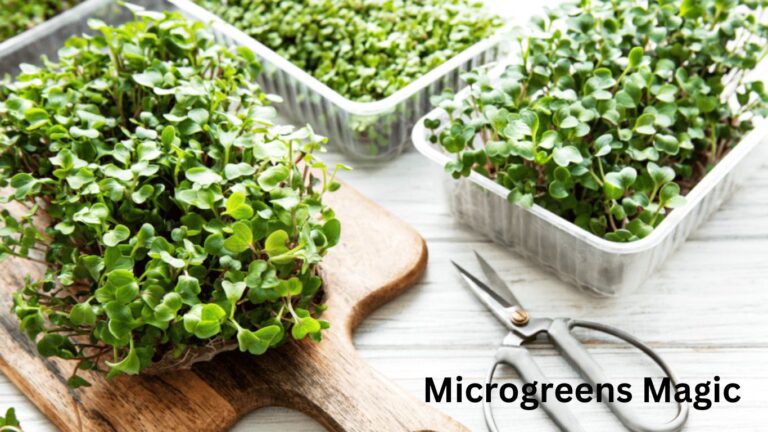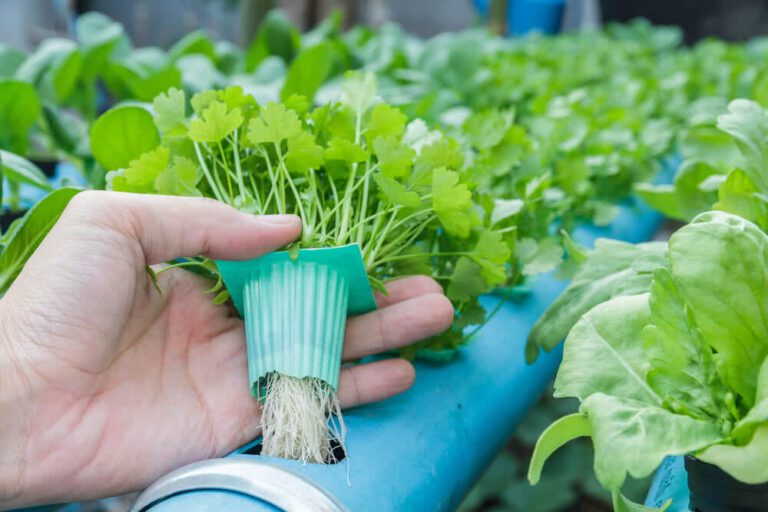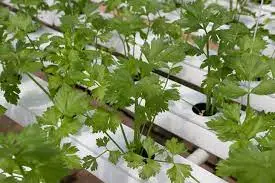Top 5 Hydroponic Crops for The Best Profit from It
Table of Contents: Hydroponic Crops
Understanding the Profit Potential of Hydroponic Crops
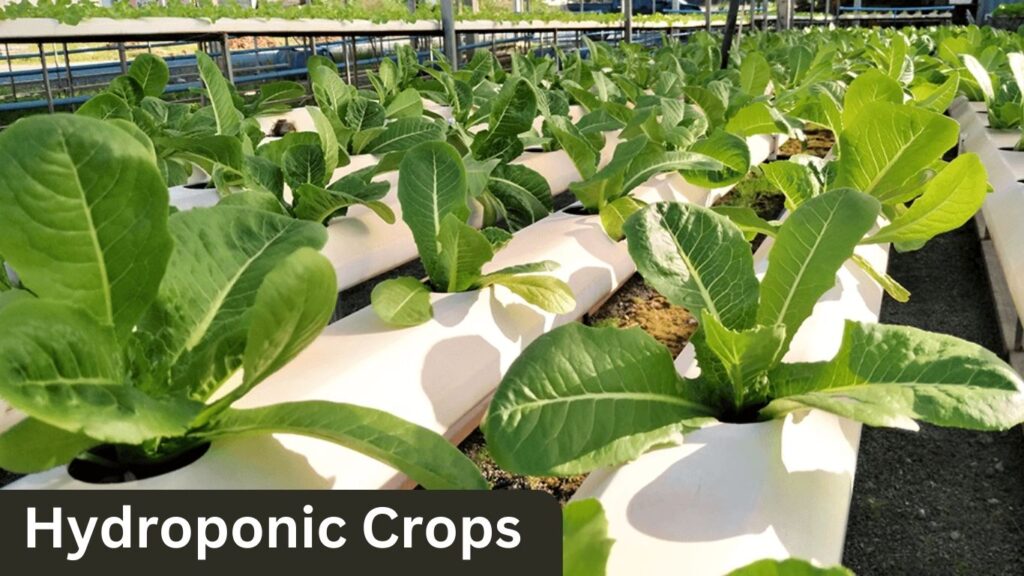
Hydroponic farming has gained immense popularity in recent years, thanks to its ability to maximize crop yields and minimize resource consumption. By growing Hydroponic crops in water, instead of traditional soil-based methods, farmers can control the nutrient levels, pH balance, and environmental conditions to optimize plant growth. But what about the profit potential of hydroponic crops? Is it worth investing time, money, and effort into this innovative farming technique?
The answer is a resounding yes. The profit potential of hydroponic crops is vast, with many farmers and entrepreneurs finding great success in this industry. According to a report by Grand View Research, the global hydroponics market is expected to reach a value of USD 16.0 billion by 2025, with a compound annual growth rate of 22.52%. This indicates a growing demand for hydroponically grown produce, which presents a lucrative opportunity for farmers.
One of the key factors contributing to the profitability of hydroponic crops is their ability to grow faster and yield higher quantities compared to traditional farming methods. Without the limitations of soil quality and nutrient availability, plants grown hydroponically can focus all their energy on growth, resulting in quicker harvests and increased productivity. Additionally, the controlled environment of hydroponic systems allows for year-round cultivation, ensuring a consistent supply of crops and potential for continuous revenue generation.
The Benefits of Growing Hydroponic Crops
Hydroponic farming offers numerous benefits that make it an attractive option for growing crops. One key advantage is that it allows plants to be cultivated in a controlled environment, free from soil-borne pests and diseases. This significantly reduces the need for pesticides and other chemical interventions, making hydroponic crops healthier and safer to consume.
Another benefit of growing Hydroponic crops is the ability to optimize resource utilization. By providing plants with the precise amounts of water, nutrients, and light they need, farmers can minimize waste and maximize efficiency. This not only saves costs but also reduces the environmental impact typically associated with traditional soil-based agriculture.
Moreover, hydroponics enables year-round production regardless of external weather conditions. By creating a controlled environment, farmers can grow crops consistently, ensuring a steady supply and potential for higher profits. This is particularly beneficial for regions with limited arable land or extreme climates, where traditional farming may be challenging.
Factors to Consider When Choosing Hydroponic Crops for Profit
When choosing which crops to grow hydroponically for profit, there are several factors that should be considered. Firstly, it is important to assess the market demand for certain crops. Research what types of hydroponic crops are currently in high demand and likely to yield a good return on investment. This can be done through market research, examining trends, and talking to potential buyers or distributors.
Another important factor to consider is the profitability of specific crops. Some hydroponic crops have a higher profit potential than others. Factors such as yield per square foot, market value, and production costs should all be taken into account when determining which crops are most likely to generate a profit. It is also worth considering any niche markets or specialty crops that may have a higher value due to their unique characteristics or limited availability.
Additionally, the ease of cultivation and the required expertise should be factored in. Some hydroponic crops may require more advanced techniques or specialized knowledge to grow successfully. Consider your own level of experience and the resources available to you when deciding which crops to grow. It may be beneficial to start with crops that are more beginner-friendly before progressing to more challenging varieties.
In conclusion, when choosing hydroponic crops for profit, it is important to assess market demand, consider the profitability of different crops, and evaluate the ease of cultivation. By carefully considering these factors, you can increase your chances of success and maximize your profits in hydroponic farming.
Assessing Market Demand for Hydroponic Crops
When considering the profitability of hydroponic crops, one crucial factor to take into account is the market demand for these crops. Assessing market demand is essential for ensuring a successful and profitable hydroponic venture.
To evaluate market demand, it is important to research and analyze the current trends and preferences of consumers. Understanding what crops are in high demand and have the potential to yield higher prices can help guide your decision-making process. Additionally, examining market data, such as sales figures and projections, can provide valuable insights into the viability and profitability of growing specific hydroponic crops.
Furthermore, it is essential to consider local market conditions and target demographics. A thorough understanding of the target consumers, including their preferences, buying habits, and willingness to pay for hydroponic crops, can help identify niche markets and areas of potential growth. Conducting surveys or focus groups to gather feedback from potential consumers can also provide valuable insights into their preferences and demand for specific hydroponic crops.
By carefully assessing the market demand for hydroponic crops, gardening enthusiasts can make informed decisions about which crops to cultivate and maximize their profitability.
High-Value Hydroponic Crops: Exploring Lucrative Options
When it comes to high-value hydroponic crops, there are several lucrative options that can lead to profitable returns. One such option is cultivating microgreens, which are young, tender plants harvested at the seedling stage. Microgreens are not only visually appealing, but they also offer a concentrated flavor and a high nutritional value, making them a sought-after ingredient in the culinary world. With a quick turnaround time of just a few weeks, microgreens can be harvested multiple times a year, allowing for continuous income generation.
Another high-value hydroponic crop to consider is strawberries. These juicy red fruits are popular among consumers, and growing them hydroponically allows for year-round production and the ability to command premium prices. By carefully selecting cultivars that are well-suited for hydroponic systems and utilizing techniques such as vertical farming, growers can maximize their harvest yield and optimize their profits. Additionally, the controlled environment of hydroponics provides an opportunity to grow strawberries without the use of pesticides, which can further enhance their market appeal.
Exploring the Profitability of Leafy Greens in Hydroponic Farming
Leafy greens are a popular choice for hydroponic farming due to their high demand, fast growth rates, and potential for profitability. With the right techniques and careful attention to detail, growing leafy greens hydroponically can result in a consistent and lucrative crop.
One of the key advantages of growing leafy greens hydroponically is the ability to control the growing environment. By providing optimal conditions such as temperature, light levels, and nutrient balance, growers can achieve faster growth and higher yields compared to traditional soil-based methods. Additionally, hydroponic systems allow for precise water and nutrient delivery, minimizing waste and ensuring that plants receive the necessary nutrients for healthy and vigorous growth. This combination of control and efficiency contributes to the profitability of growing leafy greens hydroponically.
To further explore the profitability of leafy greens in hydroponic farming, it is crucial to consider specific crop options. Lettuce, spinach, kale, and Swiss chard are among the most popular varieties chosen by hydroponic growers. These leafy greens have a relatively short growth cycle and can be harvested at different stages of maturity, allowing for a continuous supply to meet market demand. Moreover, certain varieties of leafy greens, such as specialty or heirloom varieties, can command higher prices in niche markets. Understanding the target market and selecting appropriate varieties can maximize the profit potential of hydroponic leafy greens.
Maximizing Profit with Hydroponic Tomatoes: Varieties and Techniques
When it comes to maximizing profit with hydroponic tomatoes, choosing the right varieties and implementing effective growing techniques are essential. Hydroponic systems offer an efficient way to cultivate tomatoes without soil, resulting in higher yields and better quality produce.
One popular tomato variety for hydroponic cultivation is the “Beefsteak” tomato. Known for its large size and meaty texture, Beefsteak tomatoes are highly sought after in the market. They have a rich, sweet flavor and are perfect for slicing, making them a favorite choice for salads, sandwiches, and burgers. Another profitable variety is the “Cherry” tomato. These small, bite-sized tomatoes are adored by consumers for their intense sweetness and vibrant colors. They are versatile and can be used in various culinary creations, from fresh salads to pasta sauces. By growing these high-demand tomato varieties in a hydroponic system, growers can attract buyers and command higher prices in the marketplace.
To ensure maximum profitability, it is important to implement effective growing techniques in hydroponic tomato production. One such technique is pruning, which involves removing side shoots to enhance airflow and light penetration, resulting in healthier plants and larger fruit size. Additionally, proper nutrient management is crucial to optimize growth and productivity. Hydroponic systems allow growers to closely monitor and adjust nutrient levels, ensuring the plants receive the ideal balance of essential elements. Finally, regular monitoring of environmental conditions such as temperature, humidity, and pH levels is essential for maintaining optimal growing conditions and preventing disease or pest outbreaks.
By carefully selecting high-demand tomato varieties and implementing effective growing techniques in a hydroponic system, growers can maximize their profits and create a successful and sustainable business in the world of hydroponic tomato production. With proper planning and attention to detail, hydroponic tomatoes can be a highly lucrative crop choice for many gardening enthusiasts.
The Profit Potential of Hydroponic Strawberries: Tips for Success

Hydroponic strawberries offer immense profit potential for gardening enthusiasts looking to venture into the world of hydroponic farming. With the ability to grow throughout the year and produce high-quality, flavorful berries, cultivating strawberries hydroponically can yield impressive returns. However, achieving success in growing hydroponic strawberries requires careful planning and attention to detail.
One crucial tip for success is selecting the right strawberry variety for your hydroponic system. Not all strawberry varieties are suitable for hydroponic cultivation, as some may require more space or have specific environmental needs. Opt for varieties specifically bred for hydroponic production, such as ‘Everest’ or ‘Tristar,’ known for their compact growth habit and high fruit yields. These varieties are more adaptable to the controlled environment of a hydroponic system and can maximize your profit potential.
Another key consideration is the nutrient solution used to nourish your hydroponic strawberries. The proper balance of essential nutrients is critical for healthy growth and optimal fruit production. Conduct regular water and nutrient tests to ensure your solution is providing the necessary elements in the right concentrations. Additionally, maintaining an appropriate pH level within the recommended range of 5.5 to 6.5 is essential for facilitating nutrient absorption by the plants.
By selecting the right strawberry varieties and ensuring optimal nutrient balance, hydroponic growers can unlock the profitability of cultivating strawberries in a controlled environment. Adopting these tips for success can lead to bountiful yields and a thriving hydroponic strawberry operation. To continue your journey into profitable hydroponic ventures, stay tuned for our next section, where we explore the potential of cultivating herbs for profit in a hydroponic system.
Cultivating Herbs for Profit in a Hydroponic System
Herbs have been cultivated for centuries for their medicinal, culinary, and aromatic properties. With the rising popularity of hydroponic systems, cultivating herbs for profit has become an attractive venture for gardening enthusiasts. Hydroponics offers several advantages for growing herbs, such as better control over growth conditions, increased yield, and the ability to grow year-round. Whether you’re a beginner or an experienced gardener, here are some key considerations for cultivating herbs in a hydroponic system to maximize your profit potential.
First and foremost, it’s important to select the right herbs that have a high market demand and value. Popular herbs like basil, mint, rosemary, and cilantro are often in high demand due to their versatility in cooking and herbal remedies. Conduct research on local market trends and preferences to identify the most profitable herbs in your area. Additionally, consider niche markets and specific culinary or medicinal applications that may offer higher profit margins.
Next, pay close attention to the environmental conditions needed for optimal herb growth in a hydroponic system. Each herb has specific requirements for lighting, temperature, humidity, and nutrient levels. Investing in a quality grow light system, temperature control equipment, and a nutrient solution tailored to herb cultivation can greatly enhance your yield and overall profit potential. Remember to consistently monitor and maintain these conditions to ensure healthy growth and maximum herb production.
In conclusion, cultivating herbs in a hydroponic system can be a profitable venture for gardening enthusiasts. By carefully selecting high-demand herbs and optimizing the environmental conditions, you can increase your yield and profit potential. Stay tuned for more insights on hydroponic crops and techniques to help you maximize your profit and grow a successful herb business.
Cash Crops: Identifying Profitable Hydroponic Fruits and Vegetables
To successfully establish a profitable hydroponic farm, it is essential to identify the right cash crops that have a high market demand. Choosing fruits and vegetables that thrive and yield well in a hydroponic system can significantly impact your profit potential. By focusing on crops that are suited for hydroponic growing techniques, you can maximize your yields and meet consumer demands for fresh and nutritious produce.
One popular and profitable option for hydroponic cultivation is strawberries. Known for their sweet and juicy flavor, hydroponically grown strawberries offer a premium product that commands higher prices in the market. With controlled environmental conditions and optimized nutrient solutions, hydroponic strawberries can be grown all year round, allowing for a continuous supply and a steady income stream. Additionally, the vertical growing system often used for strawberry production in hydroponics maximizes space usage, resulting in higher crop densities and greater potential for profit.
Another cash crop worth considering in hydroponics is bell peppers. These vibrant and versatile vegetables are in high demand due to their culinary qualities and nutritional value. By growing bell peppers hydroponically, you can consistently produce high-quality, blemish-free fruits with excellent color and flavor. Compared to traditional soil-based cultivation, hydroponic bell peppers are less susceptible to diseases and pests and can be grown vertically for increased productivity. With the right growing techniques and market connections, hydroponic bell peppers can generate substantial profits for farmers in both local and international markets.
As you explore the world of hydroponic farming, remember that identifying cash crops with high profitability requires careful consideration of market demand and the crop’s suitability for hydroponic growing. By selecting fruits and vegetables like strawberries and bell peppers that thrive in a controlled environment, you can pave the way for a successful and lucrative venture. Keep in mind that crop selection is just one facet of a comprehensive hydroponic operation, and other factors such as production costs, marketing strategies, and scalability should also be taken into account on your journey towards profitable hydroponic farming.
Hydroponic Bell Peppers: A Lucrative Crop Worth Considering
Hydroponic bell peppers have emerged as a highly profitable crop for growers in recent years. With the increasing demand for fresh and high-quality produce, hydroponic cultivation offers a precise and controlled environment that maximizes the peppers’ growth potential.
One of the key advantages of growing bell peppers hydroponically is the ability to optimize their yield. By providing the plants with the perfect balance of nutrients, water, and light, hydroponic systems promote vigorous growth and fruit development. As a result, hydroponic bell peppers often have larger, more vibrant fruits compared to their soil-grown counterparts. Additionally, the absence of soil-borne diseases and pests in hydroponic systems helps ensure healthier plants and higher marketable yields.
Furthermore, hydroponic bell peppers are known for their superior taste and extended shelf life. The precise control over growing conditions allows for optimal flavor development, resulting in peppers that are sweeter, crunchier, and more flavorful. Moreover, hydroponic crops are less prone to dehydration and decay, meaning that the peppers remain fresh and marketable for longer periods, reducing post-harvest losses. This factor contributes to higher profit margins for growers looking to meet the increasing demand for premium bell peppers in the market.
Profitable Alternatives: Hydroponic Cucumbers and Zucchini
Hydroponic cucumbers and zucchini offer profitable alternatives for growers looking to diversify their crop selection. By harnessing the benefits of hydroponic systems, these crops can be cultivated efficiently and consistently, producing high yields and quality produce.
Cucumbers are a popular choice among hydroponic growers due to their fast growth rate and high market demand. With proper care and management, hydroponic cucumbers can provide a continuous harvest throughout the year. Their versatility and nutritional value also make them a sought-after ingredient in various culinary creations. By growing cucumbers hydroponically, growers can optimize space utilization and reduce water and nutrient requirements, ensuring a higher return on investment.
Zucchini, on the other hand, offers its unique appeal as a low-calorie and nutrient-rich vegetable. With a relatively short growing cycle, hydroponically grown zucchini can be ready for market within a few weeks. This rapid production turnaround allows growers to maximize their profit potential by increasing the number of crop cycles per year. Additionally, hydroponics provides a controlled environment that minimizes the risk of soilborne diseases and pests, contributing to a healthier and more consistent crop. As a versatile ingredient in both savory and sweet dishes, the demand for hydroponic zucchini remains steady in the market.
In conclusion, hydroponic cucumbers and zucchini present viable options for growers seeking profitable alternatives in their cultivation endeavors. The controlled environment, efficient resource usage, and consistent yields associated with hydroponics make these crops attractive choices for maximizing profit potential. By capitalizing on the advantages offered by hydroponic systems, growers can meet market demand, increase productivity, and enhance the overall sustainability of their operations.
The Potential for Profit with Hydroponic Basil and Other Aromatic Herbs
Hydroponic farming has opened up a world of opportunities for growers, offering a lucrative potential for cultivating profitable crops. Among the most sought-after options are basil and other aromatic herbs, which not only add flavor to culinary dishes but also have a high market demand.
Basil, known for its distinctive aroma and versatile uses, thrives in hydroponic systems due to its preference for warm and consistent temperatures. Hydroponic basil tends to grow faster and yields higher compared to traditional soil-based cultivation. Additionally, it requires less water and space, making it an ideal choice for urban farming or commercial greenhouse operations with limited resources. With its increasing popularity among health-conscious consumers and restaurant chefs, hydroponic basil presents a promising opportunity to generate significant profit.
Other aromatic herbs, such as mint, cilantro, and rosemary, also hold immense potential in the hydroponic market. These herbs are known for their strong flavors, nutritional benefits, and medicinal properties, driving their demand in the culinary, pharmaceutical, and cosmetic industries. By harnessing the controlled environment of hydroponics, growers can ensure year-round availability of fresh, high-quality herbs, positioning themselves to tap into the growing market for locally sourced, sustainable, and organic produce. With proper planning and cultivation techniques, hydroponic cultivation of aromatic herbs can yield substantial profits for farmers and growers alike.
Exploring Niche Markets: Profitable Hydroponic Specialty Crops
Exploring Niche Markets: Profitable Hydroponic Specialty Crops
When it comes to hydroponic farming, exploring niche markets can be a game-changer for those looking to maximize profitability. By focusing on specialty crops that have a higher demand and a willingness to pay a premium, hydroponic growers can tap into a lucrative market that offers great potential.
One example of a profitable hydroponic specialty crop is microgreens. These tiny, nutrient-dense greens are packed with flavor and have gained popularity among health-conscious consumers and gourmet chefs alike. With their quick growth cycle and ability to be harvested within two weeks, microgreens offer an excellent opportunity for hydroponic farmers to generate a consistent income. Additionally, the ability to grow a wide variety of microgreens, from spicy radish to tender baby spinach, allows growers to cater to specific customer preferences and stay ahead in the competitive market.
Managing Costs and Increasing Profitability in Hydroponic Crop Production
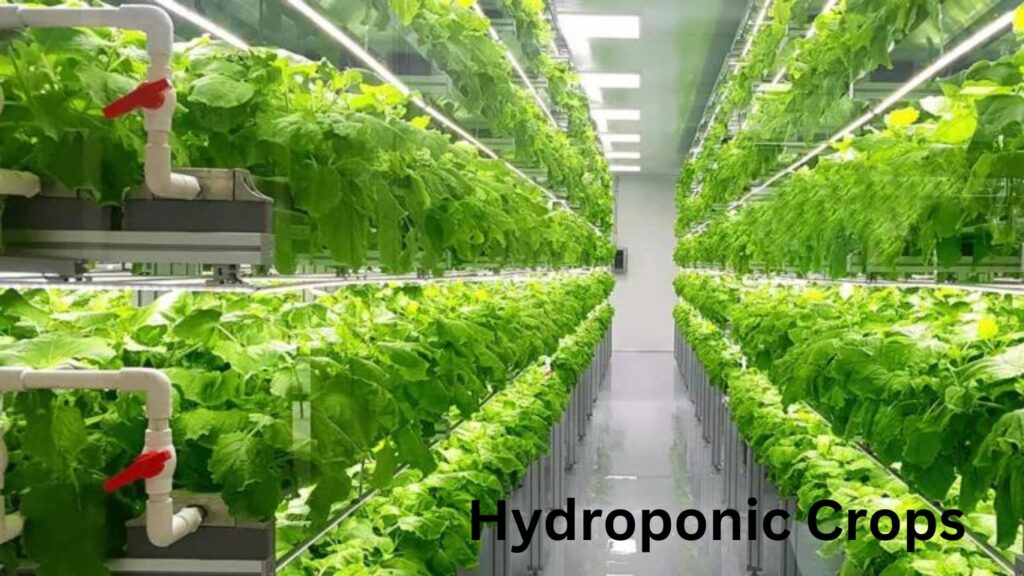
In the world of hydroponic crop production, managing costs and increasing profitability are essential for the success of any venture. By optimizing resources and implementing efficient practices, growers can not only reduce expenses but also maximize their returns. One key factor to consider is the initial investment required to set up a hydroponic system. While it may seem costly at first, the long-term benefits outweigh the initial expenditure. With hydroponics, growers eliminate the need for traditional soil-based farming, which leads to reduced water usage, lower fertilizer requirements, and decreased pest control expenses.
Another area that can significantly impact profitability is energy consumption. Hydroponic systems require artificial lighting to compensate for the lack of natural sunlight. However, by using energy-efficient LEDs and implementing light cycle optimization strategies, growers can effectively manage power consumption and minimize associated costs. Furthermore, monitoring and controlling the temperature and humidity levels within the growing environment play a crucial role in cost management. By utilizing energy-saving technologies such as high-efficiency ventilation systems and smart climate control systems, growers can stabilize conditions without inflating electricity bills.
Additionally, choosing the right nutrient solution is vital for both plant growth and cost-effectiveness. By conducting regular analyses of the nutrient levels in the system and adjusting accordingly, growers can ensure optimal nutrition for their crops while avoiding unnecessary expenses. Furthermore, adopting integrated pest management (IPM) practices can help prevent pest outbreaks and reduce the need for expensive chemical treatments. IPM focuses on biological control, crop rotation, and proactive monitoring to maintain a healthy growing environment without reliance on harmful pesticides.
Proper record-keeping and data analysis are essential tools in managing costs and increasing profitability. By meticulously documenting expenses, yields, and market trends, growers can identify areas for improvement and make informed decisions to optimize their operations. Additionally, keeping track of crop cycles and scheduling consistent harvests can help regularize income streams and mitigate potential market fluctuations.
In the ever-evolving world of hydroponic crop production, managing costs and increasing profitability are ongoing endeavors. By staying informed about the latest technologies, techniques, and market trends, growers can continuously adapt their practices to maximize returns. Investing in research and education, consulting with industry experts, and networking with fellow growers can all contribute to a successful and profitable hydroponic venture. Through careful planning, efficient resource utilization, and a focus on innovation, growers can navigate the complexities of cost management and achieve long-term profitability in the exciting realm of hydroponic crop production.
The profitability of hydroponic crops can vary based on factors such as market demand, local climate, and the cost of production. Here’s a table outlining the top 5 hydroponic crops that are often considered profitable:
Table: Top 5 Profitable Hydroponic Crops
| Rank | Crop | Reasons for Profitability |
|---|---|---|
| 1 | Herbs (Basil) | – High market demand for fresh, flavorful herbs. |
| – Quick growth cycle allows for frequent harvests. | ||
| – Compact plants suitable for vertical farming. | ||
| 2 | Leafy Greens (Lettuce, Spinach) | – Rapid growth and short harvesting time. |
| – Consistent demand for fresh, locally grown greens. | ||
| – Suitable for various hydroponic systems. | ||
| 3 | Tomatoes | – High market value for quality, vine-ripened tomatoes. |
| – Controlled environment helps prevent diseases. | ||
| – Continuous fruiting for extended harvesting periods. | ||
| 4 | Bell Peppers | – Premium price for colorful and high-quality peppers. |
| – Hydroponic systems offer optimal nutrient control. | ||
| – Consistent shape and size improve market appeal. | ||
| 5 | Cucumbers | – High demand for fresh, crunchy cucumbers. |
| – Vertical growing systems optimize space utilization. | ||
| – Controlled environment reduces pest issues. |
Notes:
- Profitability can vary based on local market conditions, so it’s essential to conduct market research.
- Factors such as energy costs, initial setup expenses, and labor also influence overall profitability.
- Specialty crops, such as microgreens or exotic herbs, can also be profitable depending on local demand.
Before starting a hydroponic venture, it’s crucial to conduct a thorough economic analysis, taking into account factors like production costs, market prices, and potential revenue. Additionally, staying informed about market trends and consumer preferences can help maximize profits in the ever-evolving agriculture industry.
Scaling Up: Strategies for Expanding
As a hydroponics enthusiast, you may be eager to expand your operations and take advantage of the growing demand for hydroponic crops. Scaling up your hydroponic system requires careful planning and implementation of effective strategies. Here are a few key strategies that can help you successfully expand your hydroponic farm.
First and foremost, it is essential to conduct a thorough evaluation of your current system. Assess its capacity and identify any areas that need improvement or modification to accommodate expansion. Consider factors such as available space, water and nutrient supply, lighting, and automation systems. Upgrading your equipment and technology may be necessary to ensure optimal productivity and efficiency in your expanded operation.
Next, it is crucial to carefully select the right crops for your expanded hydroponic farm. Consider market demand, profitability, and your own expertise in cultivating specific crops. Conduct market research to identify high-demand hydroponic crops and explore niche markets where you can establish a competitive edge. Additionally, diversification can help minimize risk and increase profitability. By cultivating a variety of crops, you can cater to different consumer preferences and tap into multiple revenue streams.
In the next section, we will delve deeper into the various factors and considerations associated with selecting profitable hydroponic crops. By thoughtfully planning your expansion and choosing the right crops, you can position yourself for success in the thriving hydroponic industry. Stay tuned to gain valuable insights on assessing market demand, exploring high-value crops, and maximizing profitability in your hydroponic farm.
What is hydroponic farming?
Hydroponic farming is a method of growing plants without using soil. Instead, plants are grown in a nutrient-rich water solution, allowing for precise control over the plants’ environment.
How profitable is hydroponic farming?
The profitability of hydroponic farming depends on various factors such as the chosen crop, market demand, and cost management. However, hydroponic farming has the potential for high profitability due to increased crop yields and the ability to grow crops year-round.
Which crops are most profitable in hydroponic farming?
There are several profitable crops in hydroponic farming, including leafy greens, tomatoes, strawberries, herbs, bell peppers, cucumbers, and zucchini. The profitability may vary based on market demand and the region in which the crops are grown.
How can I assess market demand for hydroponic crops?
To assess market demand for hydroponic crops, it is essential to conduct market research, analyze consumer trends, and understand the local market. Additionally, connecting with local restaurants, farmers markets, and grocery stores can help gauge demand.
What are some strategies for increasing profitability in hydroponic crop production?
Some strategies for increasing profitability in hydroponic crop production include optimizing resource utilization, implementing efficient energy systems, minimizing waste, diversifying crop selection, and developing strong marketing strategies.
Are there any niche markets for hydroponic specialty crops?
Yes, there are niche markets for hydroponic specialty crops. These crops can include exotic herbs, microgreens, edible flowers, and rare varieties of vegetables. These niche markets often have higher profit margins due to limited competition and unique consumer demand.
How can I manage costs in hydroponic crop production?
To manage costs in hydroponic crop production, it is important to carefully plan and monitor expenses related to equipment, nutrients, labor, and energy. Implementing efficient systems, optimizing crop cycles, and reducing waste can also contribute to cost management.
What are some common challenges in scaling up hydroponic farming operations?
Some common challenges in scaling up hydroponic farming operations include the need for increased investment in infrastructure and technology, maintaining consistent crop quality and yield, managing larger crop volumes, and adapting to changing market demands.
Can hydroponic farming be environmentally sustainable?
Yes, hydroponic farming can be environmentally sustainable when implemented with efficient resource management practices. By using less water, reducing the need for pesticides, and minimizing soil erosion, hydroponic farming can have a lower environmental impact compared to traditional soil-based agriculture.
Are there any specific guidelines for expanding a hydroponic farming business?
When expanding a hydroponic farming business, it is crucial to conduct thorough market research, assess financial feasibility, develop a detailed expansion plan, consider scalability of infrastructure, and ensure access to necessary resources such as water and electricity. Seeking professional advice and guidance can also be beneficial.

